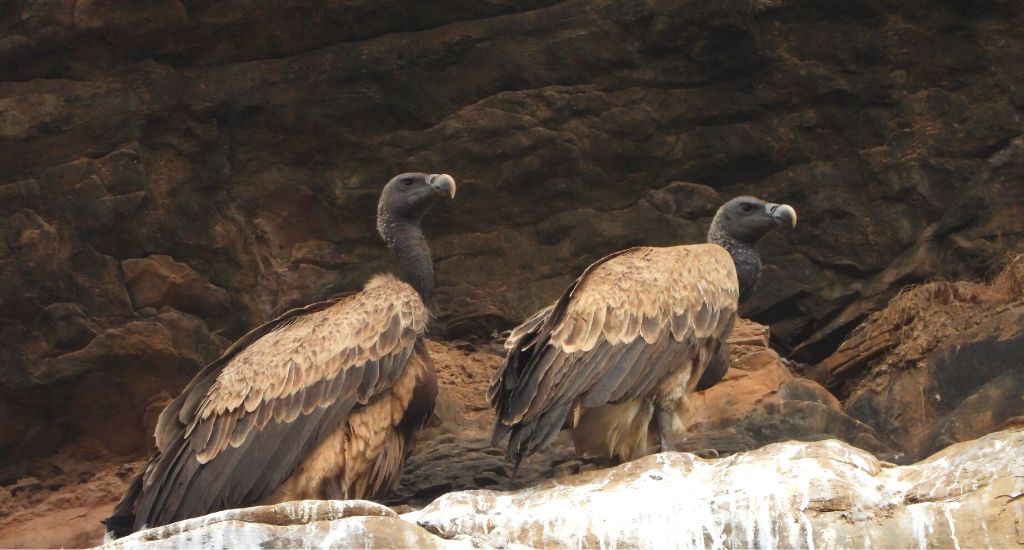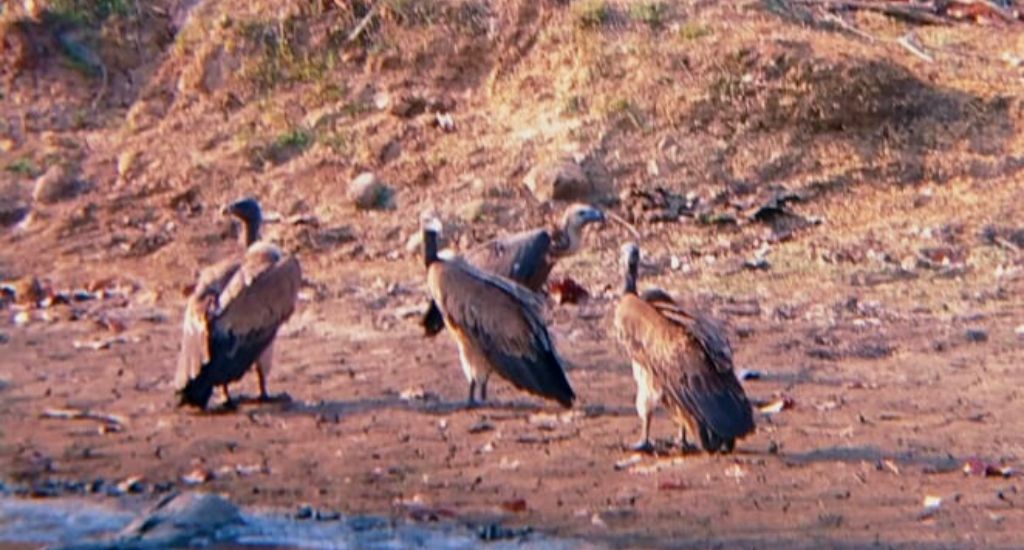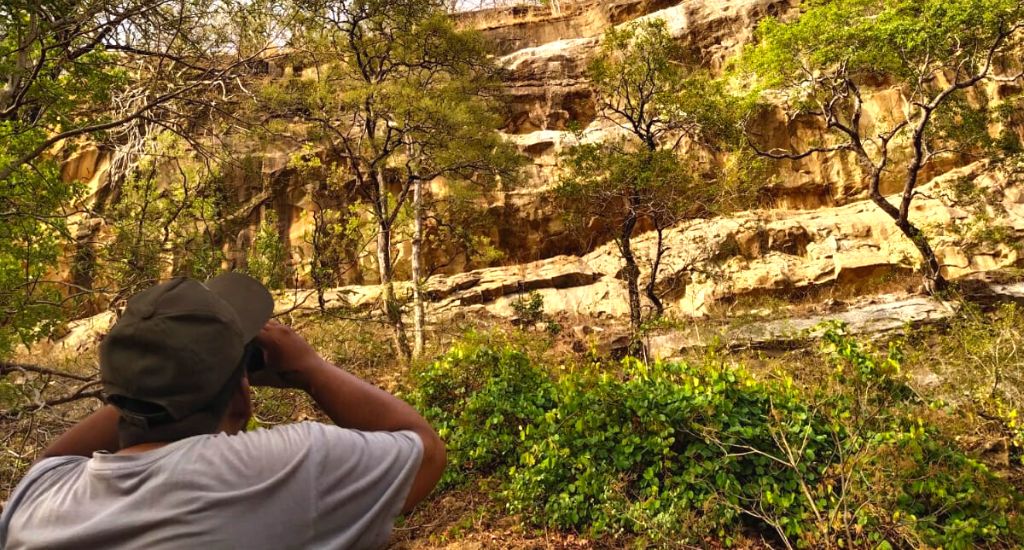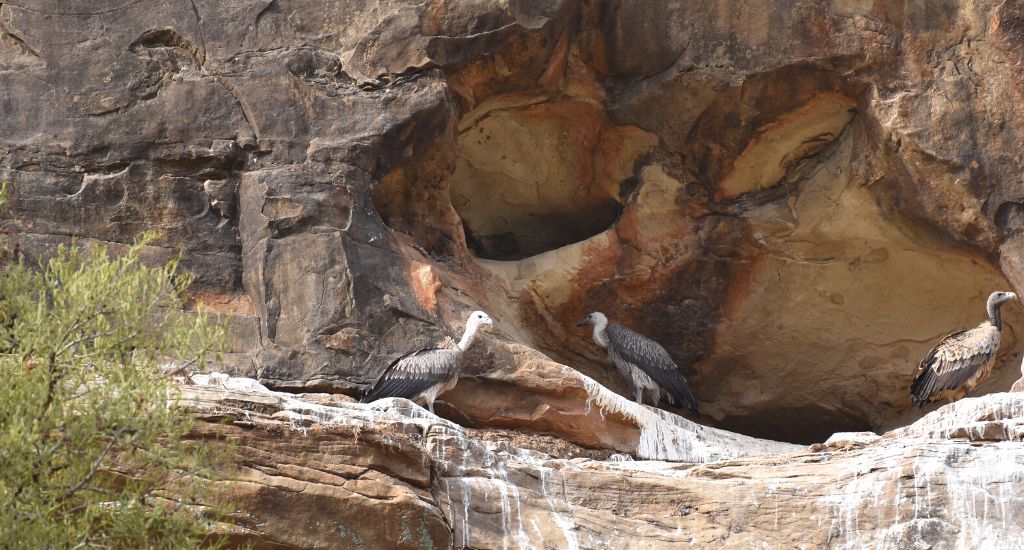
Vanishing vultures find friends for their survival
Five Baiga tribal youths track, count and protect the critically endangered Indian long-billed vultures at their roosting site in Aurapani village of Chhattisgarh.

Five Baiga tribal youths track, count and protect the critically endangered Indian long-billed vultures at their roosting site in Aurapani village of Chhattisgarh.
Santoshdas Manikpuri keeps an eye out for specks of black drifting in the sky in Aurapani, a woody village surrounded by rolling hills on the buffer zone of Achanakmar wildlife sanctuary in Chhattisgarh.
He has his eyes trained since childhood on the beautiful Indian long-billed vulture (Gyps indicus), the cleaners of the natural world, which roost on cliffs overlooking his home.
Close to the border with Madhya Pradesh, his village is one of the last havens of the Indian vulture.

This subcontinent native is teetering on the edge of extinction from diclofenac poisoning, an anti-inflammatory pharmaceutical drug widely used in treating sick livestock.
When the vultures feed on carcasses of cattle treated with diclofenac they ingest the drug, which shuts down their kidneys and kills them within days. India banned the drug in 2006 for animal use because of widespread vulture deaths, but the damage was already done. And its use has never completely stopped because the prescribed alternative is expensive.
Sightings are rare but not in Aurapani.
“It is a pleasure to watch them. I love how parents teach the fledgling to fly,” said Manikpuri, a paddy farmer who doubles up as a “vulture mitra” (friend), a paid position created by the forest department this January to track the big birds and spread awareness about their utility.
It is a pleasure to watch them. I love how parents teach the fledgling to fly
The young, educated Baiga tribal man looks at the vultures with a different perspective these days. He is on the frontline of a concerted effort to save this scavenger bird – a valuable contributor to the ecosystem, disposing cleanly of animal carcasses.
Also Read | Community’s conservation effort increases vulture population
There are four more “mitras” like him in his village, getting Rs 5,000 each every month. They keep track of the birds with binoculars, record their movements and enter the day and time of the sighting in a notebook.
Vultures have light brown feathers, an almost bald black head, and the larger males weigh around 6kg.

They have a pale bill and collar, and hold their seven-foot wings in a horizontal position when in flight. They are seen on the side of the road, pecking at rotting cattle carcasses.
But while the scavengers once lorded over the skies, their numbers plunged precipitously from the 1990s. They became a critically endangered species because of diclofenac poisoning and the destruction of their habitat by human activities and forest fires.
A study shows the population of long-billed vultures have fallen by nearly 97%. It’s estimated that only 20,000 long-billed vultures are alive in the wild in India.
In Chhattisgarh, there are about 50 in Aurapani’s nesting sites and some in Indravati Tiger Reserve, another protected area about 370km down south from Manikpuri’s village.

The birds are critical to the ecosystem and for human health in India because they are the primary means of getting rid of animal carcasses in the nation.
Their demise has led to a sharp increase in dead animals around villages and towns, which has boosted the numbers of disease-carrying rats and rabid stray dogs.
The conservation mission’s sole goal is to see them rebound, said Abhijit Sharma, who is in charge of the project in Aurapani. The mission started in December 2021, keeping with the government’s advice to create vulture-safe zones in each state. The wild birds are tracked, caught and tagged.
Also Read | Young twitcher becomes desert’s star birding guide
There’s a captive breeding programme going on simultaneously. In the wild, the mating season begins in October, eggs hatch by January and the young are ready to leave their nests in another three months.
“Undercover surveys are conducted to find out how many farmers are dosing their cattle with diclofenac. Highways are monitored because vultures eat roadkill. We must ensure roads and surrounding areas are diclofenac-free,” Sharma said.
Manikpuri is immensely dedicated, spurred by his love of vultures.

He sometimes travels 35km on his bike in blistering rain from Aurapani to Karidongri forest rest house, where he shares his insight on the conservation of the birds.
Such sorties become extremely risky in the wet season when rain-fed hill streams inundate the roads. He plods on, though.
Aurapani’s cliffs are ideal roosting sites for the long-billed vultures. But they don’t feed here. Every morning, they hitch a free ride on warm updrafts along the ridge and travel to neighbouring Madhya Pradesh in search of carcasses. This is the time when Manikpuri and other “vulture mitras” like Rajesh Kumar Dhurwe from Patparha, 5km from Aurapani, and Masatram Maravi take a headcount.
The roll call happens again when they return to the nests before sunset. “We note the timings and click photos with our cellphone cameras,” Manikpuri said.
The lead image at the top shows a close up view of the long-billed Indian vulture (Photo by Abhijit Sharma)
Deepanwita is a journalist based in New Delhi. An alumna of Asian College of Journalism, she writes about rural development, gender and climate change.